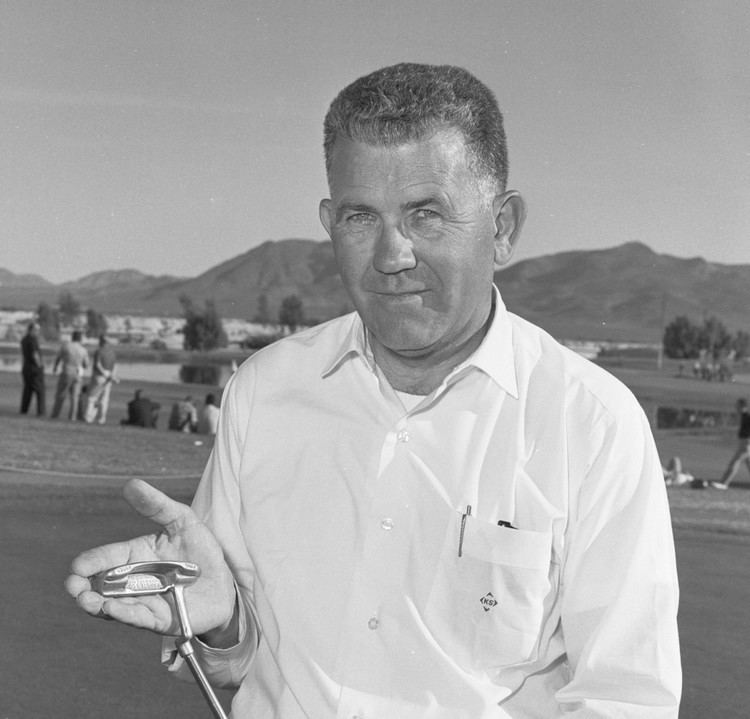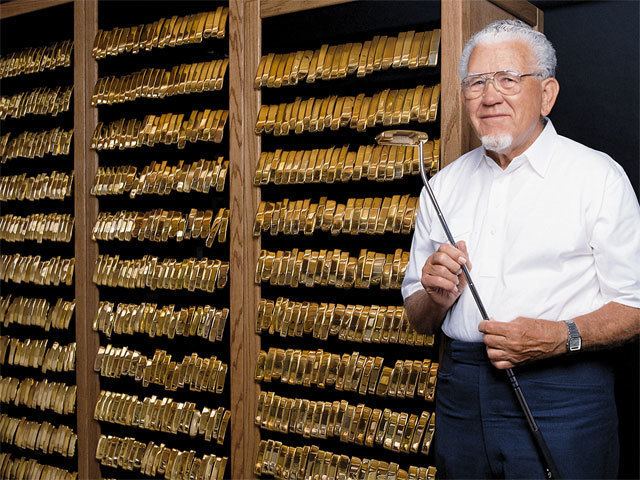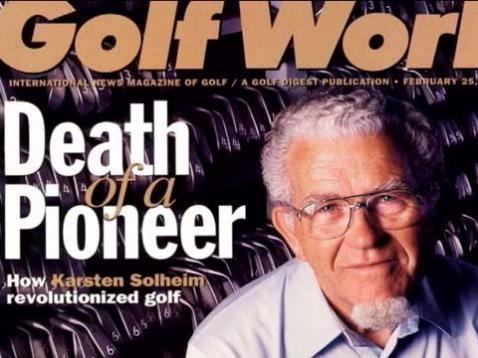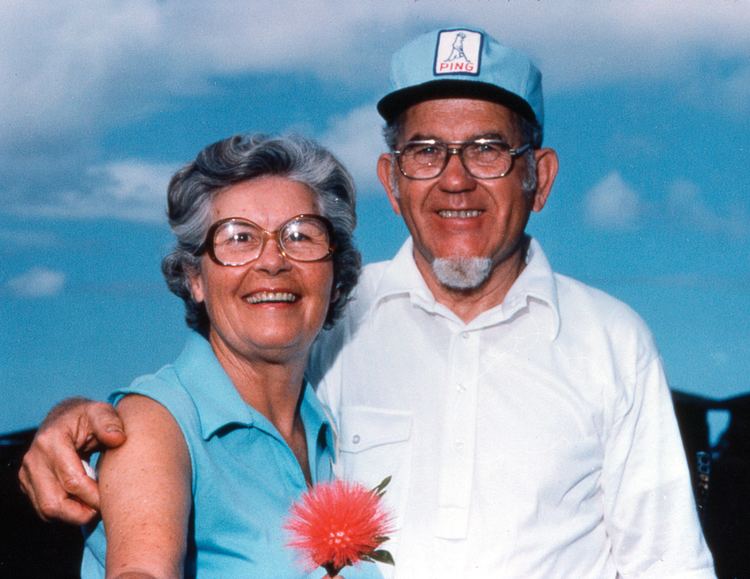Role Businessman Name Karsten Solheim | Ethnicity Norwegian American | |
 | ||
Born September 15, 1911 ( 1911-09-15 ) Bergen, Norway Monuments ASU Karsten Golf CourseTempe, Arizona (1989)Karsten Creek Golf CourseStillwater, Oklahoma (1994) Occupation engineer, inventor, executive Spouse Louise Crozier Solheim (m. 1936–2000) Children Allan Dale Solheim, Sandra Louise Solheim, Karsten Louis Solheim Siblings Ray Solheim, Marjorie Solheim, Elaine Solheim Parents Herman A. Solheim, Rogna Kippen Solheim | ||
Nationality Norway United States | ||
A legacy of accuracy karsten solheim and the scottsdale tr putter
Karsten Solheim (September 15, 1911 – February 16, 2000) was a Norwegian-born American golf club designer and businessman. He founded Karsten Manufacturing, a leading golf club maker better known by its brand name of PING, and the Solheim Cup, the premier international team competition in women's golf.
Contents
- A legacy of accuracy karsten solheim and the scottsdale tr putter
- 2001 induction karsten solheim montage
- Early life
- Golf
- References

2001 induction karsten solheim montage
Early life

Born in Bergen, Norway, to Herman A. and Ragna Koppen Solheim, the family emigrated to the United States in 1913, and settled in Seattle, Washington, in its Ballard neighborhood. Herman was a shoemaker, and Karsten graduated from Ballard High School in 1931 and enrolled two years later at the University of Washington, with aims at becoming a mechanical engineer. Due to family financial hardship during the Great Depression, he withdrew from UW after his freshman year and then worked in the family shoe shop.

Upon the outbreak of World War II, he resumed his engineering studies via University of California extension courses and joined the defense industry, working at Ryan Aeronautical in San Diego. After the war he initially worked as a salesman, but then returned to engineering with positions at Convair and General Electric.
Golf
While living in upstate New York in 1954, Solheim took up golf at the age of 42 when his colleagues at G.E. invited him to make up a foursome. He quickly took to the game and found that his main problem was putting, so he designed himself a revolutionary putter. Instead of attaching the shaft at the heel of the blade, he attached it in the center. He applied scientific principles to golf club design, which had previously been based largely on trial and error, transferring much of the weight of the club head to the perimeter.
Solheim took to manufacturing golf clubs in his garage and after a move to Phoenix he touted them to skeptical professionals at tournaments. Acceptance came when Julius Boros won the PGA Tour's Phoenix Open, using Solheim's "Anser" putter in early 1967. Later that year, Solheim resigned from G.E. to establish Karsten Manufacturing, makers of the PING brand of clubs. In 1969, he introduced irons based on the same principle of perimeter weighting, and these were quickly successful. The other golf equipment manufacturers soon followed his innovations, which became industry standards.
With the success of PING, Solheim became a benefactor of golf. He donated millions of dollars to the Karsten Golf Course at Arizona State University and Karsten Creek Golf Course at Oklahoma State University, and sponsored LPGA tournaments in Oregon, Arizona, and Massachusetts. He was the driving force behind the creation of the Solheim Cup, the biennial tournament between teams of women professionals from Europe and the United States, which was modeled on the men's Ryder Cup, and was first played in 1990. Later that decade, he developed Parkinson's Disease, and in 1995 he handed over his company to his youngest son John. He died in Phoenix in February 2000 at the age of 88.
Solheim was inducted in 1991 into the Scandinavian-American Hall of Fame and posthumously inducted into the World Golf Hall of Fame in 2001. Two collegiate golf courses bear his name: ASU Karsten Golf Course in Tempe, Arizona, opened in 1989, and Karsten Creek Golf Course in Stillwater, Oklahoma, opened in 1994.
Solheim's contribution of perimeter weighting and usage of investment casting are recognized as two of the key innovations in the history of golf.
